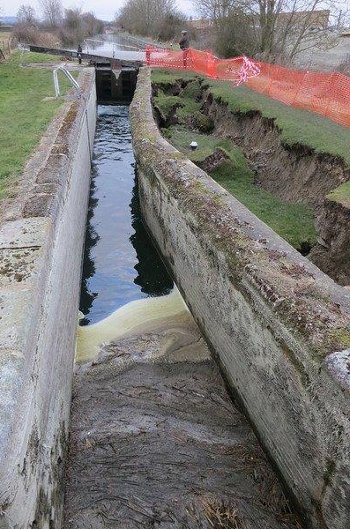I DON'T know how much Maffi actually knows about the collapse of that lock on the Aylesbury Arm, other than speculation, but apparently specialists who have inspected the damage are most surprised to find that its construction is very different from others on the Arm, writes Alan Fincher.
Others apparently feature much heavier walls, built in a way that as you go deeper, they get additional width in the brickwork. At the failed lock, apparently the walls are not reinforced in the same manner lower down, and will always have been structurally a lot weaker.
 Skimped
Skimped
Nobody has access to original documents that explain why, but there is a feeling that maybe the original construction was skimped on, and not to spec. even when the lock was built.
In my view the strong likelihood is that the collapse is of a lock not built as solidly as some in the first place, and very likely the very wet weather of the last few years, resulting in far more water in the surrounding soil, has alone been enough to cause it, and that neither long established bollards or the much newer dairy construction are likely to be implicated.
Whether there were tell-tale signs, or anyone could have known I don't know, but I have not yet heard anyone say anything like "We were aware of a potential problem there which BW/CaRT had failed to address," and if this were the case, someone is usually quick to jump in and say so.
Not new
The bollards at the lock side of the collapsed lock are not a new feature, and do not relate to that much criticised recent British Waterway exercise to install three bollards at a typical narrow lock,
I don't know when they do date from, other than it is almost certainly at least 2006, but I suspect they have been there a lot longer than that. No doubt enquiries with those who use the Arm regularly might establish an idea of just how long they have been there?
